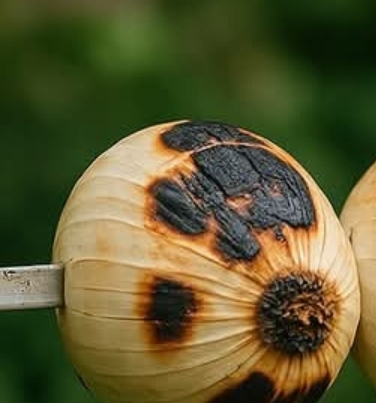Why Burn Garlic? The Hidden Power UnveiledGarlic’s allicin, antioxidants, and sulfur compounds make it a health and culinary superstar, but burning it alters its chemical makeup, flavor, and cultural role. For centuries, cultures from Egypt to Vietnam have burned garlic to ward off illness, cleanse spaces, or elevate dishes. Unlike raw garlic, burnt garlic offers a smoky, nutty profile and unique applications, blending science with tradition. Whether you’re a foodie, wellness enthusiast, or curious explorer, burning garlic is a fascinating experiment that connects you to global heritage and modern health trends, as seen in X posts celebrating its versatility.What Happens After 15 Minutes of Burning Garlic?Burning a clove of garlic for 15 minutes triggers chemical, sensory, and cultural transformations. Here’s the breakdown:🔥 Chemical ChangesAllicin Breakdown: Heat above 80°C degrades allicin, garlic’s key antibacterial compound, reducing its raw potency. New sulfur compounds like diallyl disulfide form, contributing to a milder, smokier aroma.Nutrient Loss: Some heat-sensitive nutrients, like vitamin C (17mg per 100g raw), diminish, but antioxidants like quercetin partially remain, offering residual health benefits.Maillard Reaction: Prolonged heat triggers the Maillard reaction, browning the garlic and creating complex, nutty flavors distinct from raw garlic’s pungency.🍳 Culinary TransformationFlavor Shift: After 15 minutes at medium heat (e.g., 150–200°C in a pan), garlic turns golden to dark brown, developing a rich, smoky, and slightly sweet taste. This enhances dishes like garlic oil or stir-fries.Texture Change: The clove softens, then crisps if burned longer, becoming a crunchy garnish or paste for soups and sauces, popular in Asian cuisines like Vietnamese noodle dishes.🩺 Health EffectsReduced Medicinal Potency: Burnt garlic retains some anti-inflammatory and antioxidant properties but is less effective than raw garlic for cholesterol reduction (10–15% LDL drop with raw garlic) or infection-fighting.Digestive Aid: Traditional practices in India suggest burnt garlic soothes stomach discomfort, though evidence is anecdotal. Its milder flavor may be gentler on sensitive stomachs.Toothache Relief: Some cultures apply burnt garlic paste to gums for pain relief, possibly due to residual antimicrobial compounds, but scientific support is limited.🌍 Cultural and Spiritual ImpactEnergy Cleansing: In Mediterranean and Asian traditions, burning garlic for 15 minutes is believed to purify spaces, dispel negative energy, or protect against illness, a practice rooted in folklore but lacking scientific backing.Aromatic Ambiance: The smoky scent creates a calming atmosphere, akin to incense, aligning with wellness rituals in 2025’s holistic health trends.Health Benefits of Burnt Garlic vs. Raw GarlicWhile burning reduces some benefits, burnt garlic still offers value:🩺 Milder Anti-Inflammatory Effects: Residual flavonoids reduce inflammation, though less potently than raw garlic’s allicin.🦷 Oral Health Support: Burnt garlic’s antimicrobial properties may combat oral bacteria, though less effectively than raw.🩺 Circulation Support: Trace sulfur compounds may aid blood flow, supporting heart health, but raw garlic’s 5–10% blood pressure reduction is stronger.🍵 Digestive Comfort: Its softer flavor may ease digestion for those sensitive to raw garlic’s intensity.How to Burn Garlic Safely at HomeBurning garlic is simple but requires care to avoid bitterness or smoke hazards. Follow this method for optimal results.
Burning a Clove of Garlic: What Happens After 15 Minutes at Home?
